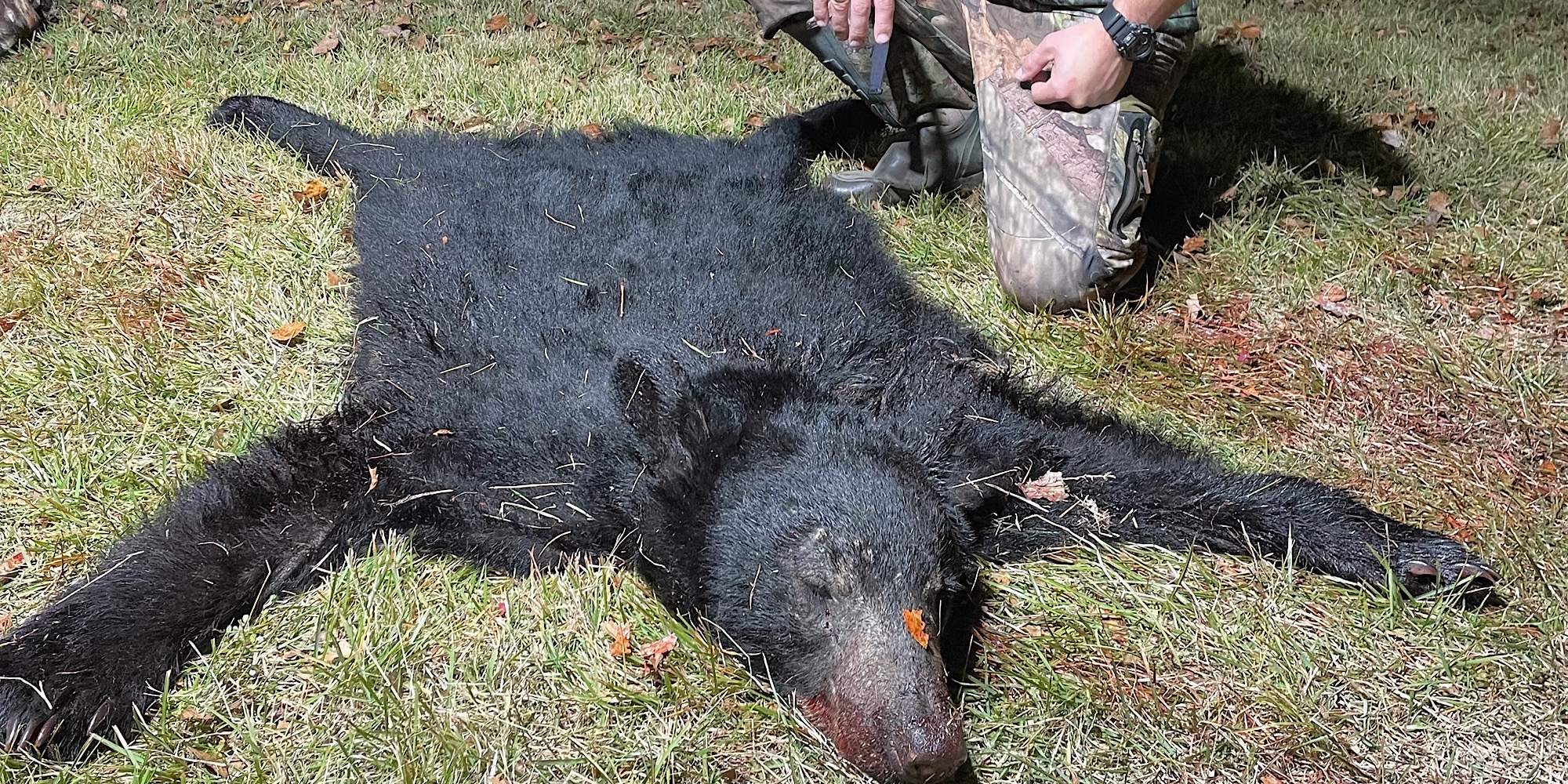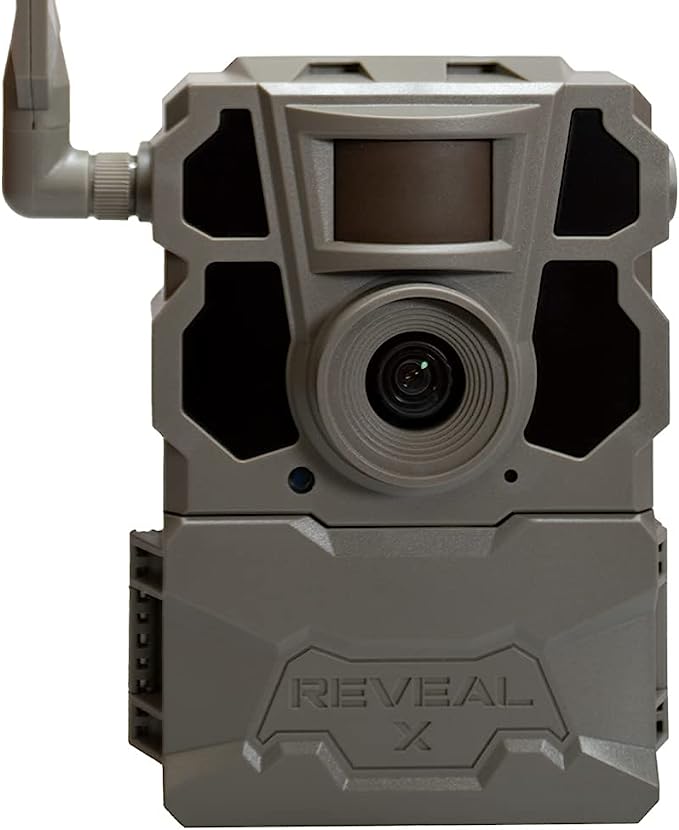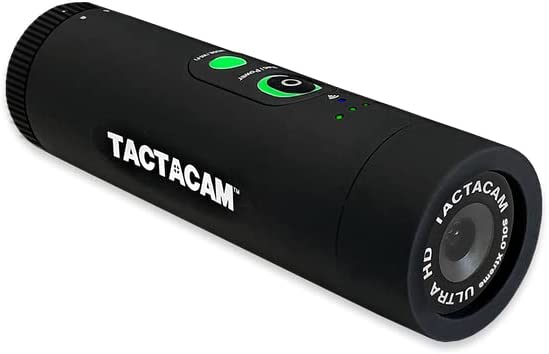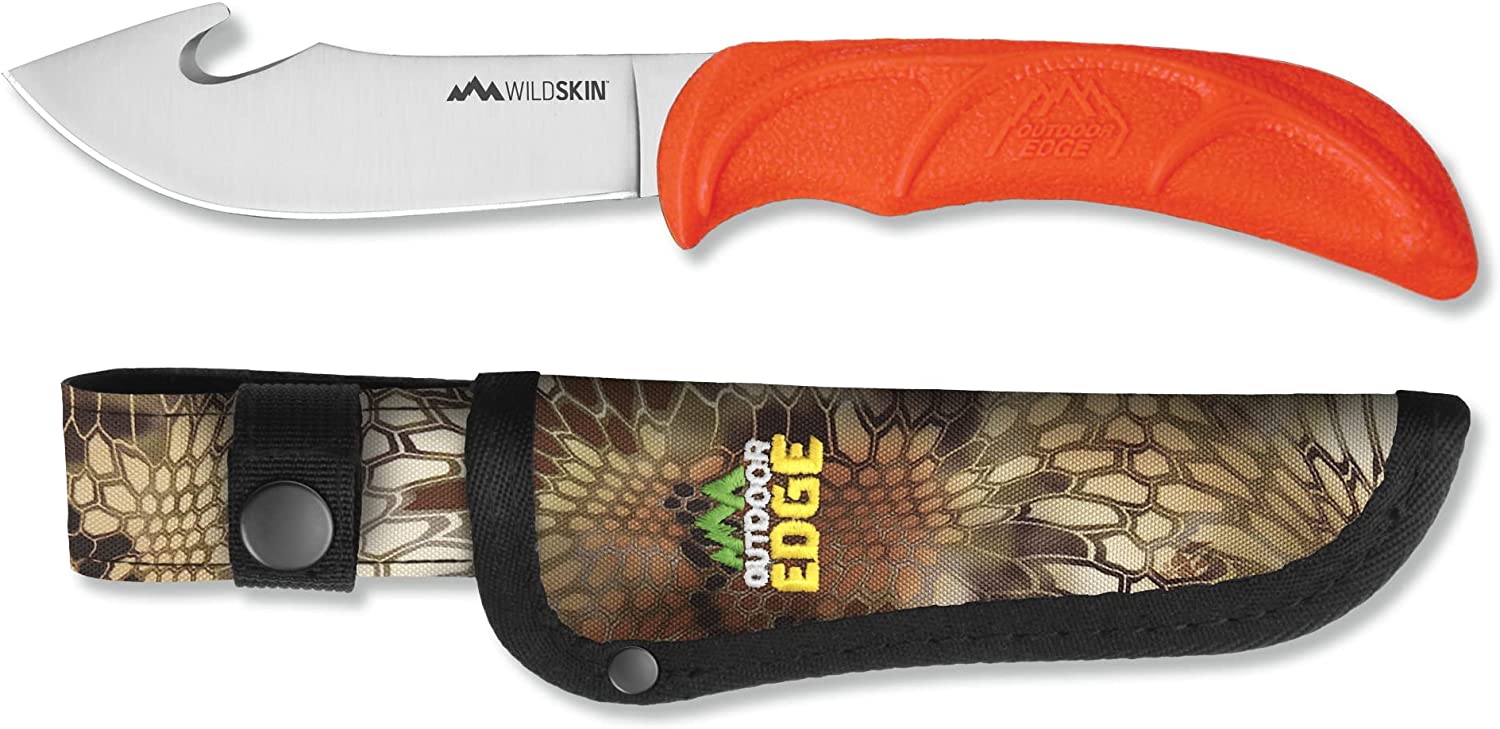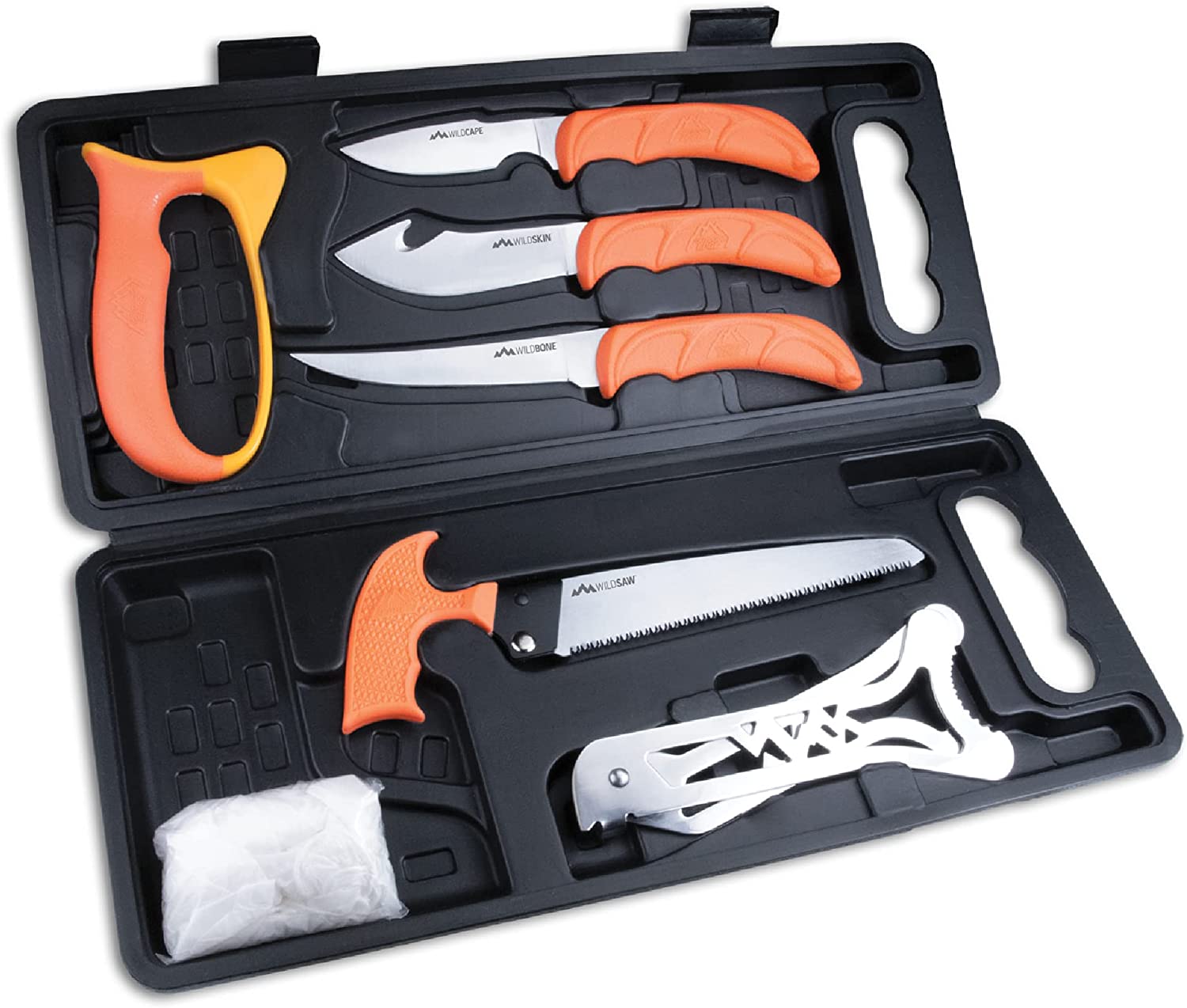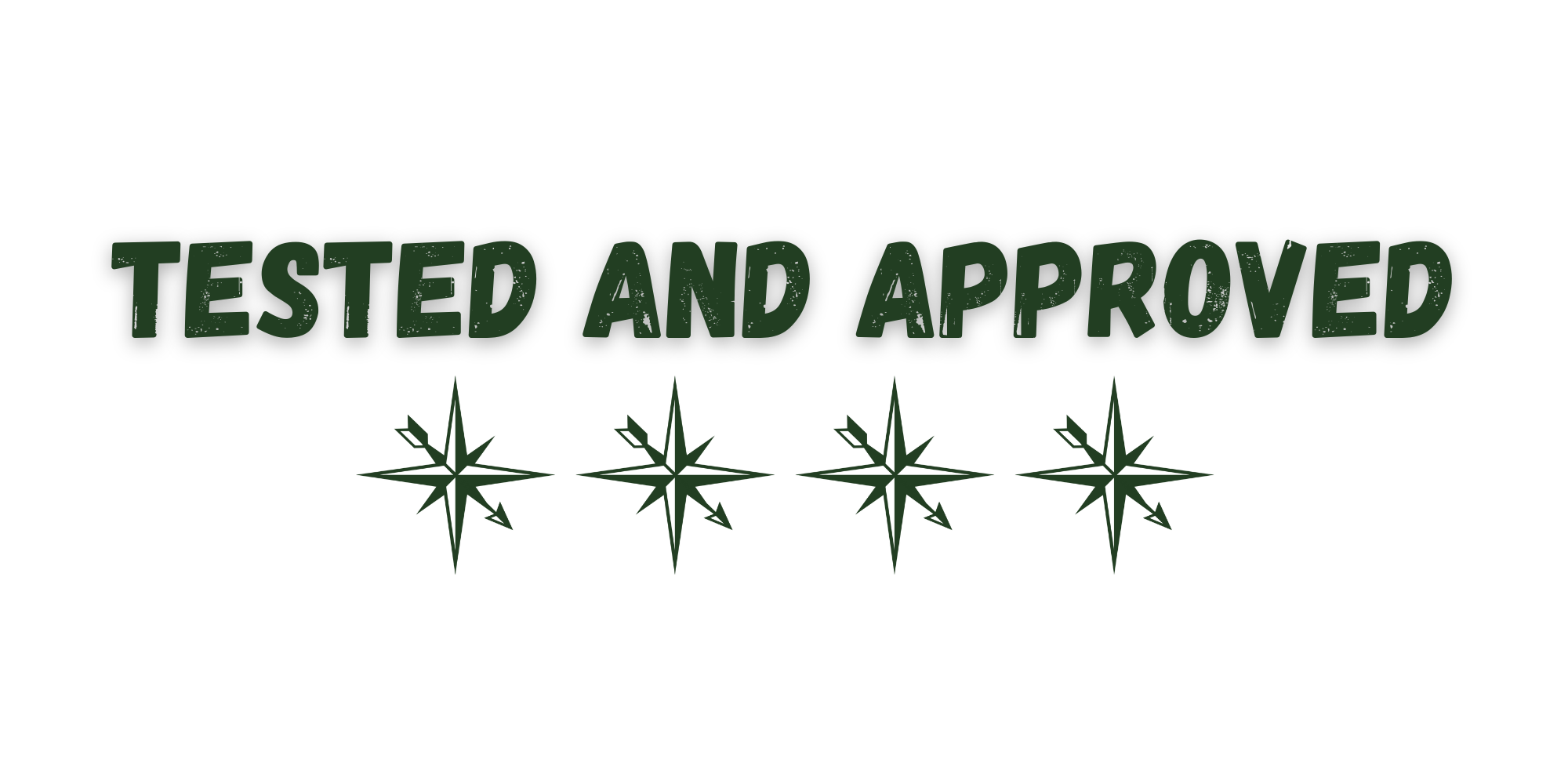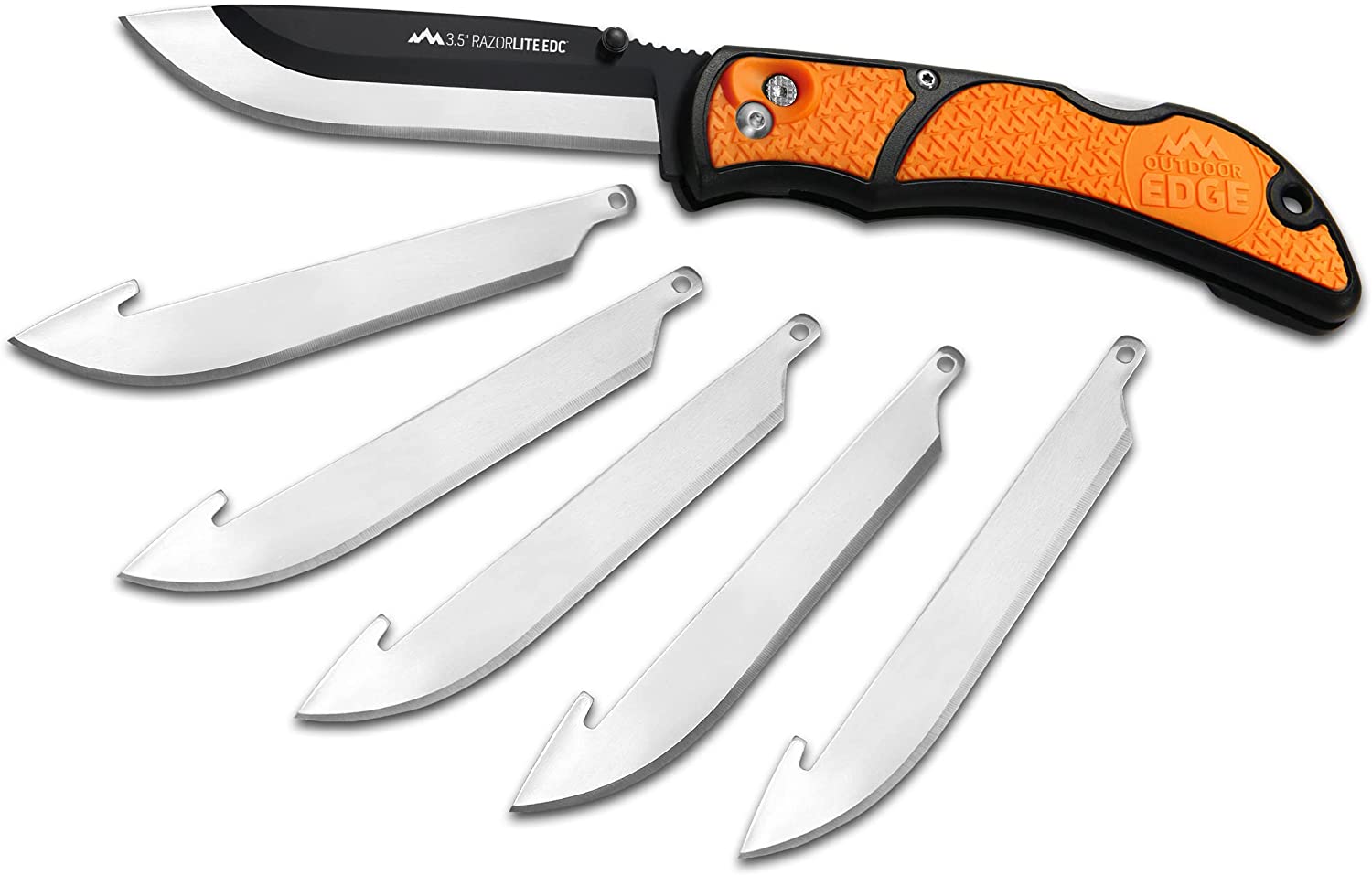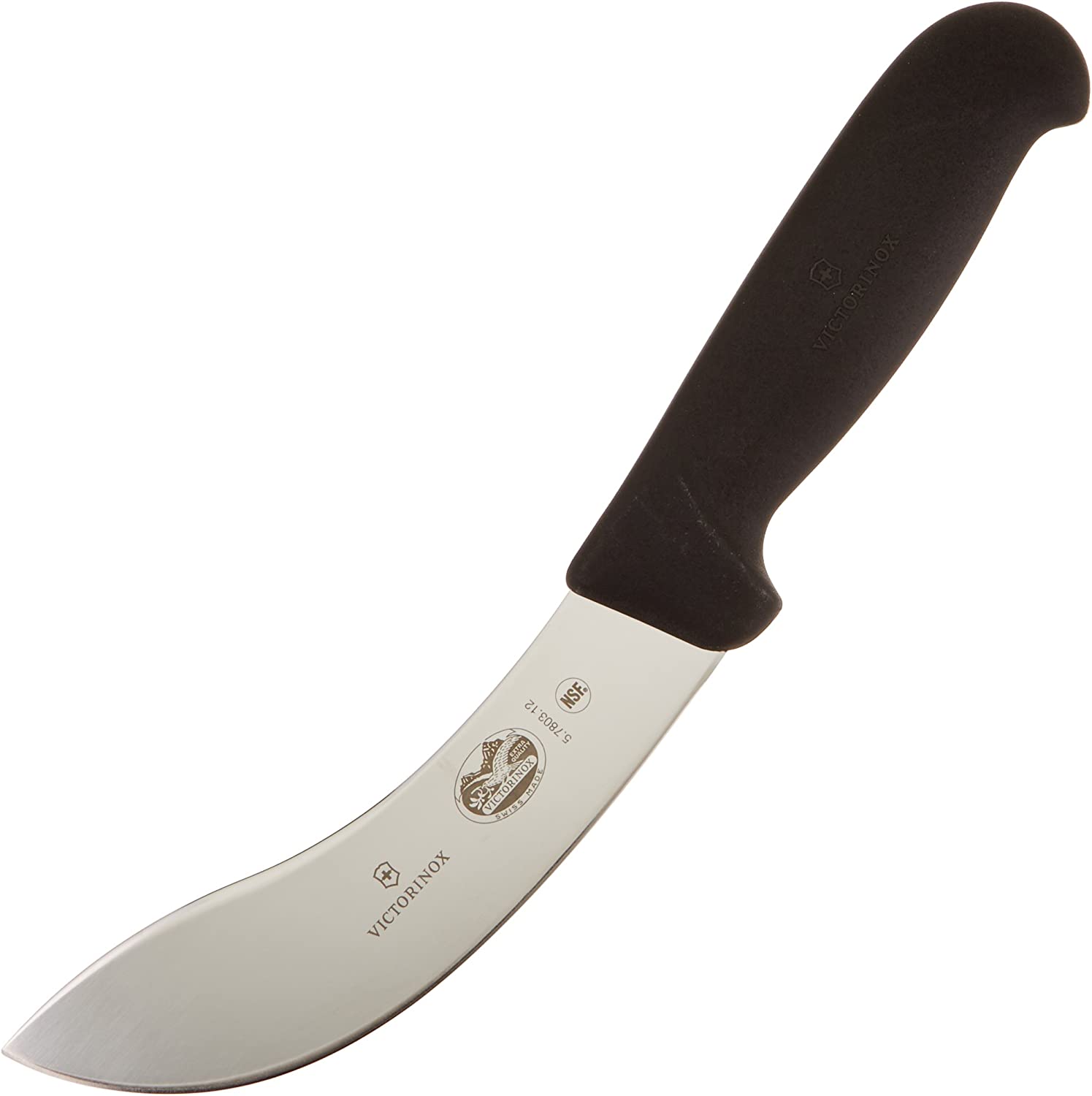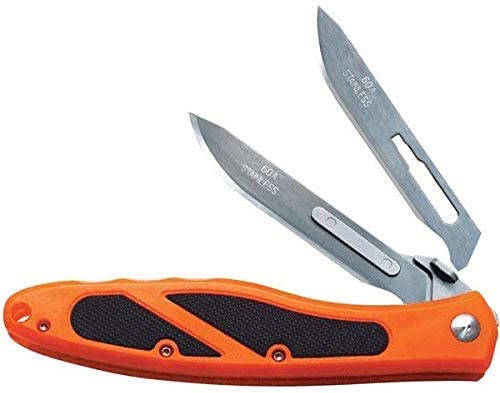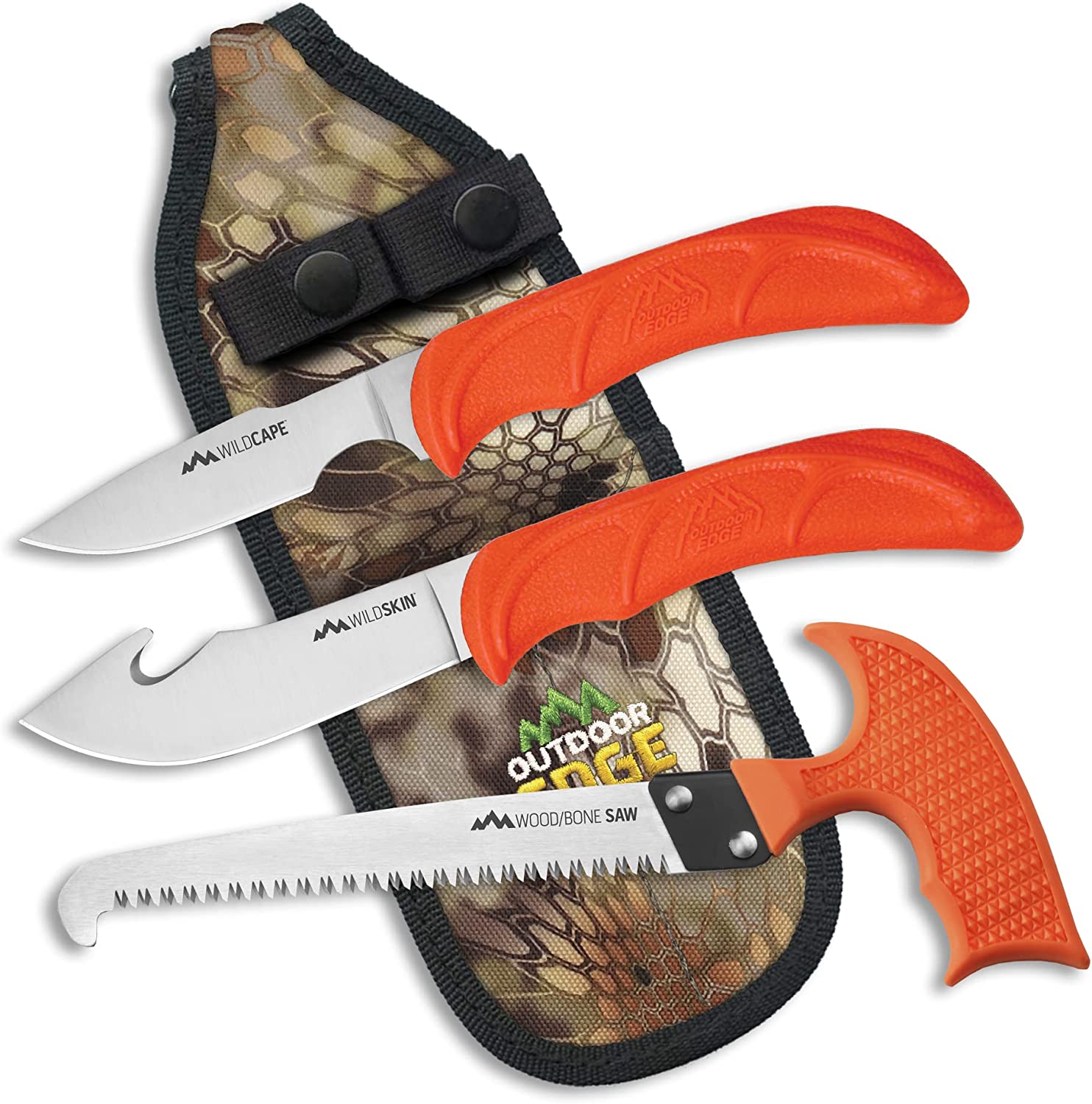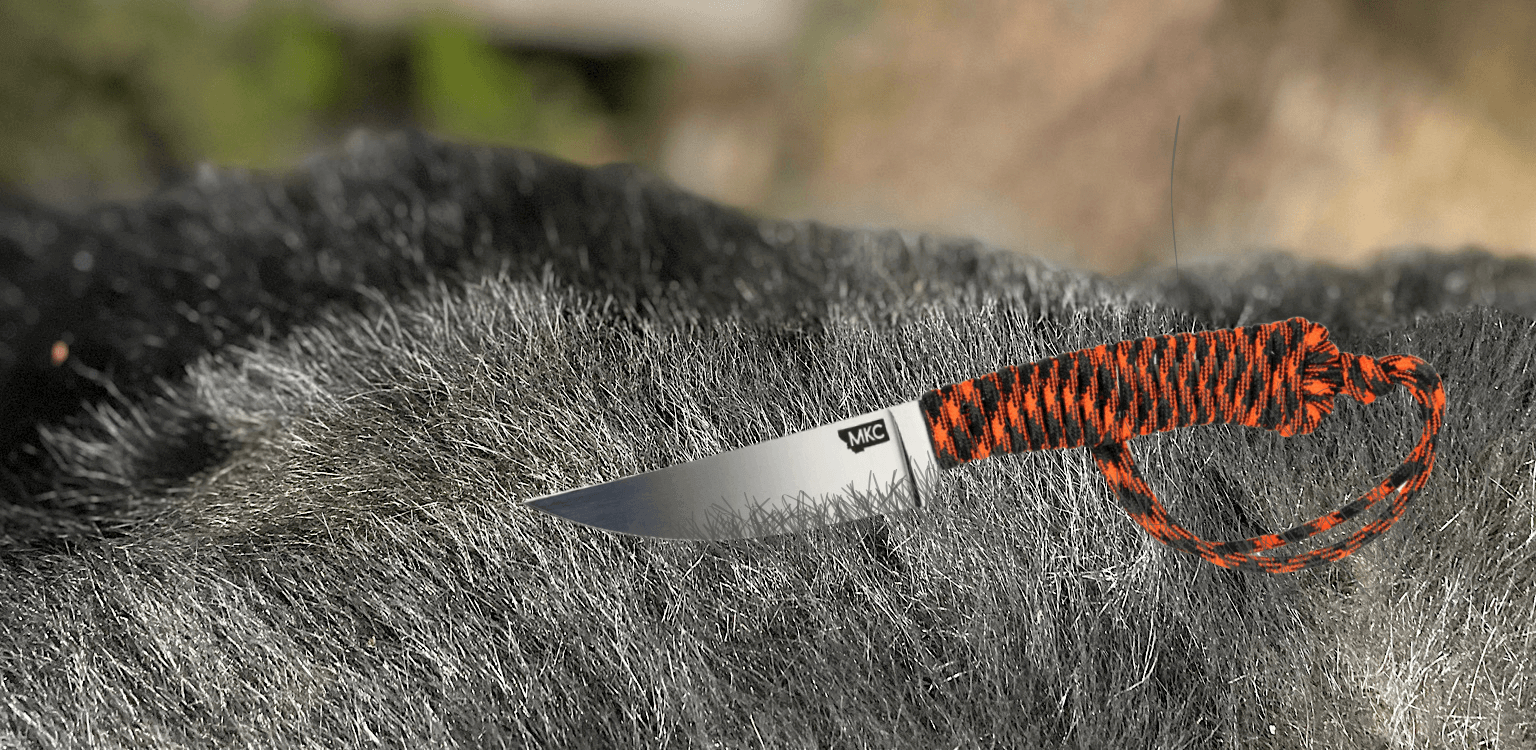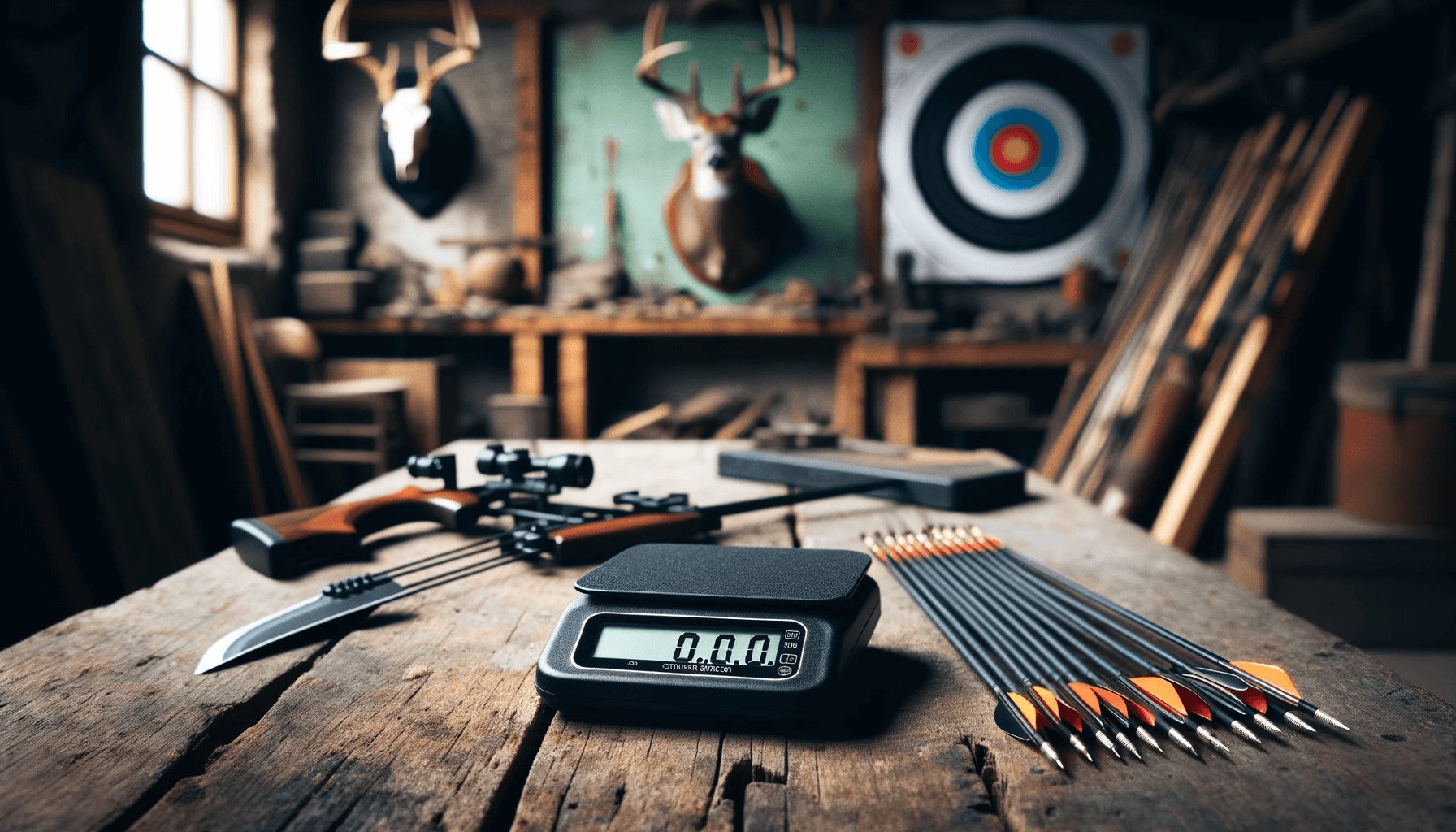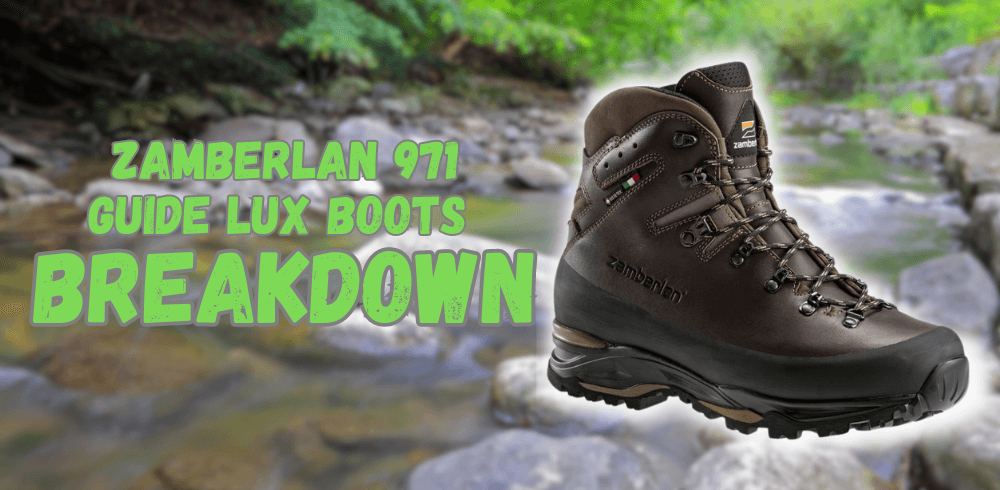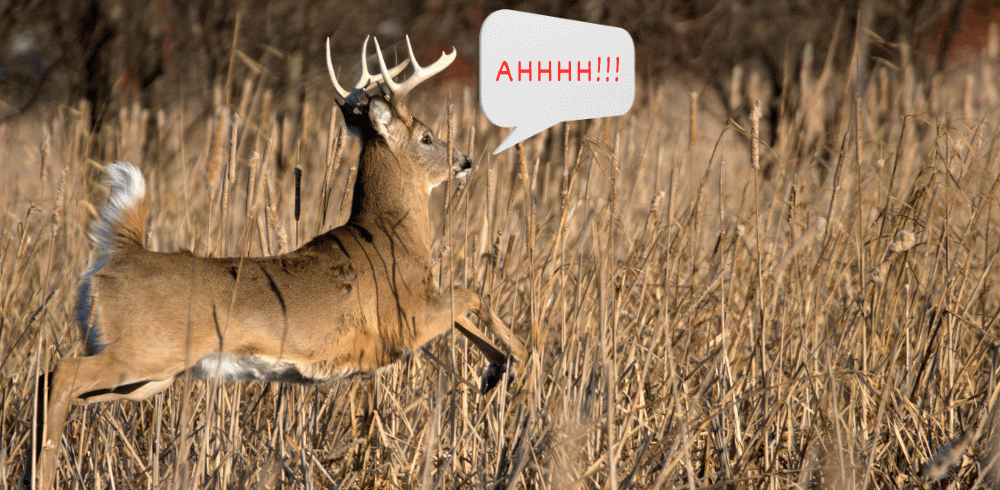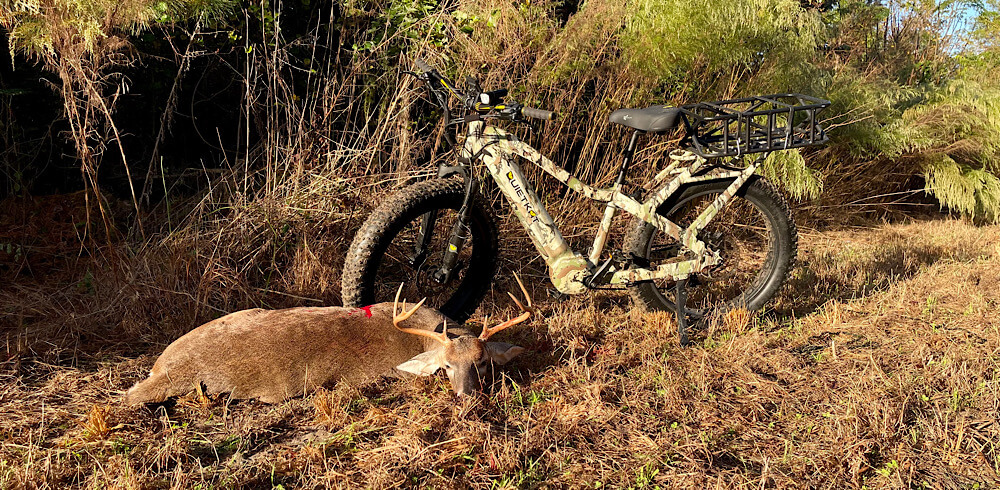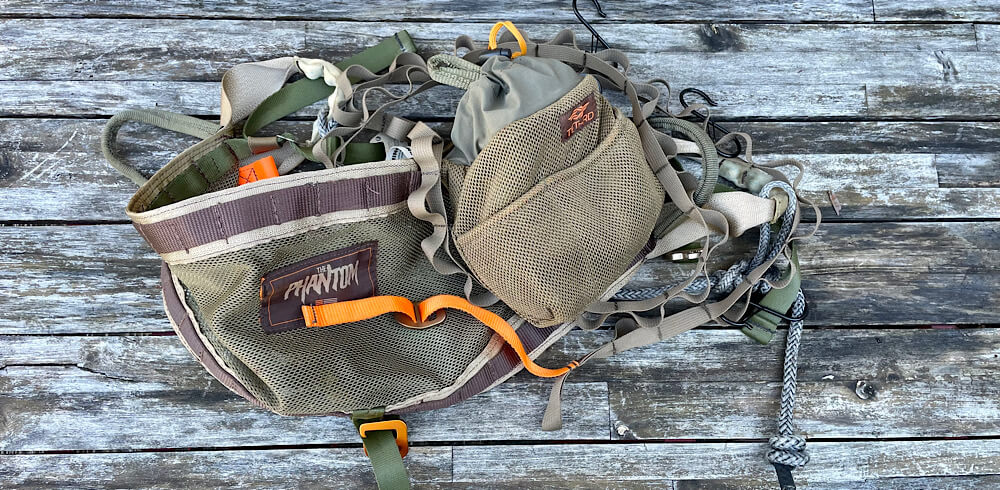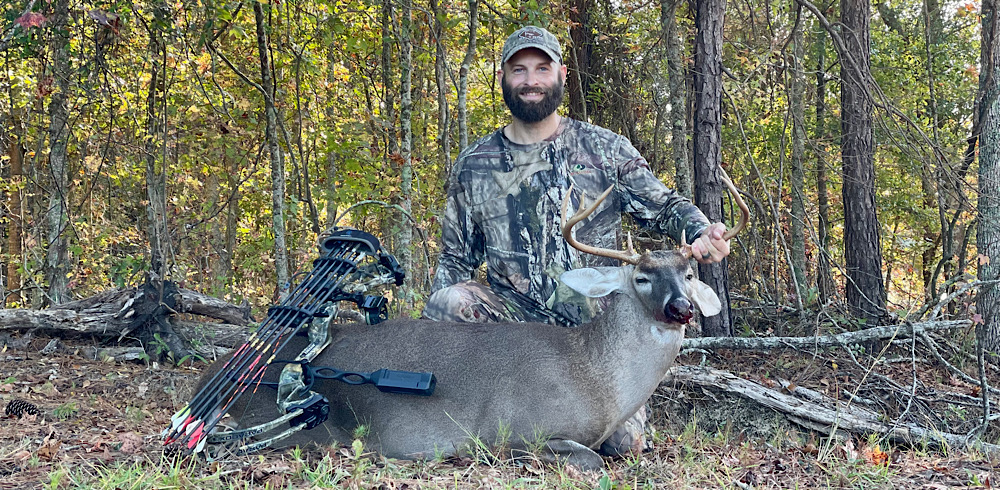Whether you’re preparing to skin your first animal or you’re a seasoned guide looking for an upgrade, you need the best skinning knife for the job.
Best Skinning Knife - Top Picks
- Tested and approved
- Rubber, non-slip handle
- Gut hook skinning combo
- Gut hook skinning combo
- 3.5″ blade
- Old Timer Lifetime Warranty
- Tested and approved
- Everything needed for field dressing, skinning, and processing
- Durable, sharp blades
So, what makes the best skinning knife? First and foremost, it’s razor sharp. On top of that, it’s easy to grip when soaked in rain or blood, it’s easy to clean when the job is done, and it’s going to last you a lifetime – or close to it.
The list below showcases the best skinning knives that meet those criteria. Need the best deer skinning knife? You’ll find it here.
Need a full kit that includes not only the skinning knife, but all other blades necessary for processing? You’ll find that too.
So, take your time, look them over, and choose the best skinning knife that suits you and the work you’ll put it through.
Best Skinning Knife - Full List
- Complete field dressing kit
- 7-piece set
- Razor sharp blades
- Non-slip rubberized handles
- Includes rib spreader for cooling meat
For the hunter who field dresses, skins, or quarters their own game, the Outdoor Edge WildPak is the way to go.
I’ve personally used it on both deer and black bear, and it makes the process a breeze. This 7-piece set includes a caping knife, a gut hook/skinning knife, a boning/fillet knife, a bone saw, a rib spreader, a blade sharpener, and gloves.
It all comes packaged in a tough, washable hard case. The textured, rubber handles make it easy to keep a good grip when things get messy, and the blades are easy to keep razor sharp.
This kit can also be found in our Gift Guide for Hunters.
- 3.5″ blades
- Includes 5 replacement blades
- Single-hand opening
- Highly Rated
- Non-slip handle
- Pocket clip
If you’re like me and don’t like having to constantly resharpen your skinning knives, you’re going to love the Outdoor Edge RazorLite.
It’s designed to accept replacement blades, and includes 5, not counting the one that comes in the knife itself.
They’re 3.5″ blades, which is great for those hard to reach and tight areas, but it’s also plenty of cutting surface for general skinning purposes with big game such as deer and turkey.
It’s got an orange non-slip grip, which makes it easy to hold when things get slippery, and easy to locate when you’ve laid it down while skinning after sunset.
The pocket clip makes it super convenient for keeping it on your side or in your pack’s storage pocket for later use.
All-in-all, it’s a great concept from one of the most notable brands in outdoor knives.
It’s definitely the best deer skinning knife with regards to maintenance and convenience.
- 3.5″ high carbon stainless steel blade
- 7.3″ total knife length
- Gut hook/skinner combo
- Sawcut handle
- Full tang blade
- Old Timer Lifetime Warranty
You absolutely cannot beat a multi-purpose knife. The Old Timer name is synonymous with two things – quality and sharp blades.
That’s exactly what you get with their Gut Hook Skinner. If you’re skinning your animal, you’re typically gutting it first.
If you’ve never used a gut hook when making your initial incision through the hide, you’re missing out on the speed and effectiveness that it can provide.
This deer skinning knife – and elk, caribou, moose, and all other big game animals, for that matter – is equipped with a 3.5″, high carbon stainless steel Shrade blade.
This knife also includes a brown leather carrying sheath, so you’re always ready to go to work when you harvest an animal.
If you’re looking for the best skinning knife, and also one that’s fixed-blade, sharp, and assists in gutting, the Old Timer 150T Guthook Skinner is a great option.
- Fixed blade design
- Textured, rubberized handles
- Pucture-proof sheath
- Sheath includes built-in carbide sharpener
- Gut hook skinner combo
The Gerber Myth Field Dress kit is everything you need to go from start to finish when skinning an animal.
Field dressing is made easy with the gut hook, followed by skinning large areas with the larger knife, and smaller, tighter areas with the smaller straight blade.
The smaller straight blade is also ideal for caping out around the eyes, nose, and mouth.
What I really like about this set is the hard, puncture-proof sheath that fits the skinning knives in a piggyback position, keeping them nice and compact.
And also, the sheath includes a built-in carbide sharpener, alleviating the need for an additional piece of gear.
The textured rubberized handles help to keep you working when things get slippery, and things always get slippery when skinning.
These skinning knives are capped off with the Gerber name, so you know the quality that you’re getting.
One of the best skinning knives on the market today, and definitely worth trying out.
- From the makers of the Swiss Army Knife
- 5″ swept blade
- Fibrox Handle
- Non-slip grip
If a love of the outdoors runs in your family, chances are, you’ve been given a Swiss Army knife at some point in your life. If you haven’t, you at least know what it is.
One thing that stands out about the Swiss Army knife is that unless you intentionally try to destroy it, they seem to last forever. That’s quality.
And that quality is passed on to every one of the knives Victorinox produces, including the Fibrox.
This knife is specifically designed for skinning, as evidenced by the swept back blade design.
A swept back blade is great for helping you to maximize the amount of cutting surface on the blade without as much risk of sticking the point of the blade into the meet or hide as you’re working.
The blade is 5″ in length, giving you plenty of blade to work with on larger game animals, and the handle is non-slip, Fibrox nylon.
You may not think Swiss Army knife when you’re looking for the best skinning knife, but you should think Victorinox.
- Includes 12 stainless steel replacement blades
- Highly reviewed
- Non-slip rubberized handle inserts
- 2.75″ blade length
- 7.25″ total knife length open
The Havalon Piranta-Edge skinning knife is another with some unique characteristics that are super practical.
For starters, it’s another skinning knife that keeps you from constantly having to sharpen your blades.
The 12 included replacement blades allow you to simply swap out blades before getting started if the old blade has dulled or chipped.
That’s a huge timesaver versus having to get out the honing block or ez sharpener.
The next unique characteristic about this skinning knife is the size of the blades. At 2.75″, with a relatively narrow height, this knife is useful in tighter areas, such as where legs meet brisket on deer.
The rubber handle inserts make it easier to grip when wet from blood or rain, and its orange color makes it easy to spot when laid down while skinning in the dark.
This knife includes not only the 12, stainless steel replacement blades, but also a pocket clip and carrying sheath.
It’s a highly rated knife, thought by many to be the best deer skinning knife there is.
- Everything necessary for skinning
- Skinning knife, caping knife, bone saw
- Gut hook skinning knife
- Non-slip rubber handles
- Includes belt sheathe
For those who don’t need everything that the WildPak includes (listed first on the list), the Outdoor Edge WildGuide 4-piece kit may be just what you’re looking for.
It includes the items necessary for skinning, but leaves out a few of the non-essentials, such as the rib spreader, sharpener, and gloves.
These knives, including the gut hook skinner, all have extremely comfortable, textured rubber handles, and come with a nice belt sheathe for easy and compact carrying.
If you’re looking for the most convenient and best skinning knives that cover all the bases, the WildGuide is a great option.
- Textured rubber handle
- 4″ blade
- Gut hook skinning knife
- Nylon belt sheathe included
Enough has already been said about the Outdoor Edge sets above, which include the WildSkin gut hook skinning knife.
So, I’ll keep this short and sweet. If you’re only interested in the gut hook skinner, here it is!
It includes a nylon belt sheath, so it’s right by your side when you’re ready to work.
I can honestly say it’s one of the best skinning knives I’ve ever had. It holds a great edge and is very easy to keep clean.
The Best Skinning Knife Isn't Always Expensive
If you do your own research, you’ll see that there are countless skinning knives available valued at hundred of dollars.
However, it’s completely unnecessary to pay that kind of money for a skinning knife. The best skinning knife isn’t always going to be expensive.
Expensive knives are usually as pricey as they are because of the types of material their handles are made out of, the time it takes to design and build them, and the names that are stamped on them.
Most skinning knives that you’ll see professional hunters and taxidermists using are mostly valued at well under $100.
And if the pros don’t need a $300 skinning knife, neither do you. If you want to be able to say you payed a pretty penny for one, then by all means, go for it.
But if you’re looking for the best skinning knife, which doesn’t have to come with a cringe-worthy price tag, simply go by the reviews, the brand, and the quality of the blade.
Which is the best skinning knife for me?
I say this in most of my gear-related posts, and it bares repeating – best is a subjective term, and it’s decided by YOU, not me or anyone else.
I’ve got my preferences just like everyone else. But that doesn’t mean the knife I think is best is actually best for everyone.
That’s why you’re looking at a list, and not a post about one knife in particular. You need options. Just not all the options the internet can provide.
You need the best options, which is what you’ll find here, and you need to decide from there which is the best skinning knife for you.
There are so many knives with so many distinct characteristics, lengths, features, and so on, that every knife isn’t going to be the best for every situation.
So, if a manufacturer claims to have the best skinning knife ever made, just take that with a grain of salt, look into it, and decide if you think it’s the best for the work that you’ll put it through.
If you’re skinning moose, you’re probably going to want a skinning knife with a longer blade than if you’re never going to skin game larger than a whitetail.
So, when deciding which is the best skinning knife for you, think through what game you’ll be skinning, what blade shape will work best if you’re skinning back for meat versus caping around eyes and noses, what length blade will be best, which handles will offer the best grip when wet, and which knives will be the easiest to resharpen/change blades and clean.
The Best Deer Skinning Knife
Because of the relatively small size of whitetails, compared to larger game such as elk and caribou, you don’t need a very large blade to skin them.
Blades around 3″ and larger are plenty for whitetails, especially because you have to make turns in tight places, such as where the legs meet the brisket and paunch, and in between the ribs.
What I have found to be the best deer skinning knife is the Outdoor Edge WildSkin gut hook skinner.
I have it as part of the kit found in the number one spot above. I like the kit because it has everything necessary to go from start to finish with field dressing, skinning, quartering out, and deboning.
I’ve used it for three seasons now, and I love it. The blades resharpen easily with the included sharpener, the handles are super grippy, even when wet, and the knives are all super durable and haven’t shown any wear and tear from cutting through short-ribs and scraping along bones.
But to single out one knife as the best deer skinning knife, I’d have to go with the Outdoor Edge WildSkin above.
How To Skin An Animal
Taking the processor out of the equation and skinning your own animal is such a rewarding experience that will take your hunt to a whole new level.
It seems like a daunting task before ever beginning, and there is a bit of a learning curve to it, but once you have done the research and have the head knowledge, you have to dive in and just do it for everything to actually click.
And don’t worry if you feel like you’re lost or messing up in the process. It’s just a part of the learning phase. You’ll quickly become more and more confident and effective, with each and every harvest.
Let’s take a whitetail deer for example. The steps involved with skinning a whitetail are going to be relatively the same for any other four-legged mammal with a similar body structure (i.e. moose, caribou, elk, mule deer, hog, bear, etc.).
Step 1: Stabilize the animal for field dressing
Lorem ipsum dolor sit amet, consectetur adipiscing elit. Ut elit tellus, luctus nec ullamcorper mattis, pulvinar dapibus leo.
Step 2: Field dress
Stainless Steel Blades
What you’ll notice on most skinning knife specs is that the blade is going to be made of stainless steel. Not to get too in the weeds of metallurgy, but stainless steel is an alloy of iron that is resistant to rusting and corrosion.
It’s not hard to see why this would be an important characteristic for a skinning knife to have. In the outdoors, it can be impossible at times to keep your knife dry.
And for me, at least, it can be many hours after skinning an animal before I’m home and ready to clean off my knife.
If my skinning knife didn’t have a stainless steel blade, it would have rusted many times over from rain water and dew. So, if you’re wanting your knife to last, make sure the one you choose comes with a stainless steel blade.
The best skinning knife will always have a stainless steel blade, or one made of an equally rust-resistant alloy.
Skinning Knife Maintenance
You can own the best skinning knife the world has ever known, but if you don’t take care of it, it just won’t last.
When talking with custom knife builder and expert in his craft, Robby Bowman, I learned what happens to the edge of a knife blade when it’s in the process of dulling.
If you look at at the edge of a blade that has been used under a microscope, you’ll notice that the extremely fine edge begins to bend to one side or the other.
If you don’t use a leather strop, or something similar, to straighten the edge back out during use, it will eventually form an “L” shape and break off.
That’s when your only option will be to use a sharpener, which takes little bits of metal off to shave the blade back into a fine edge.
Remember the old timey barbers who would shave men’s faces with a straight edge, and wipe the shaving cream off on a leather strop? Well, they weren’t just cleaning off the blade.
They were straightening back out the edge. If you want your skinning knife to not only last for many years, but to hold a sharp edge, I’d recommend you do the same with yours.
You don’t necessarily have to straighten it out during use. Let’s be honest – typically there’s too much meat and hair on the blade for that to be a feasible option.
However, once the job is done, or if you can rinse it during use, you should definitely straighten the blade to keep from having to sharpen, which is, in essence, lowering the lifespan of your blade by removing material.
Not to mention the fact that the manufacturers of your knife are able to create the sharpest edge possible on your knife in the factory, and at just the right angle.
So, while it’s possible to create a great edge on a knife, with the right amount of knowledge and effort, you really want to do everything you can to keep the original edge for as long as possible.
And aside from cleaning after use, you want to make sure you dry your skinning knife off after washing it or using it in the rain.
Even just wiping it once with a paper towel after use will help in the long run. Even though stainless steel is resistant to rust and corrosion, it isn’t completely rust-proof.
Throughout my life, I’ve had many stainless steel products, including knives, that I left soaking in water for too long, only to find them with little bits of rust on them.
So, keep them dry. And if you do happen to see rust forming on your blade, a nice little trick for removing it without damaging the metal on the blade is by balling up some tin foil nice and tight, and firmly rubbing it over the rusted area.
Lastly, rubbing your blade with food-grade mineral oil after drying will keep it protected from moisture between uses. This is a step that not many will do, but if you love your knife and want to hand it down one down, this is a step you won’t want to skip.
Just be sure to use a mineral oil labeled “food-grade” or “food-safe,” as the oil you’ll be using will be cut into the meat you’ll be eating the next time you skin an animal.

